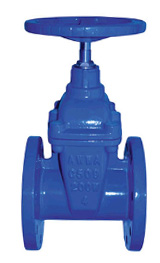10 月 . 13, 2024 01:49 Back to list
rising stem gate valve
The Rising Stem Gate Valve An Overview
Rising stem gate valves are essential components in various industrial applications, known for their reliability and effectiveness in controlling fluid flow. This type of valve operates with a simple yet efficient mechanism, which distinguishes it from other valve types and makes it particularly suitable for specific circumstances.
The design of a rising stem gate valve incorporates a stem that moves upward as the valve is opened, hence the name rising stem. This vertical movement indicates the position of the valve, providing a clear visual cue of whether the valve is open or closed. The rising stem valve is composed of several key components the body, gate, stem, and the handwheel or actuator used for operation.
One of the primary advantages of rising stem gate valves is their ability to provide a full flow area. When fully opened, these valves create minimal obstruction to fluid flow, thus reducing pressure drop and enhancing system efficiency. This characteristic makes them particularly valuable in applications where high flow rates are necessary, such as in water supply systems, oil and gas pipelines, and various industrial processes.
rising stem gate valve

Moreover, rising stem gate valves are highly durable and able to withstand significant pressure and temperature variations
. Their robust construction typically involves materials like carbon steel, stainless steel, or brass, ensuring long-lasting performance in demanding environments. This durability reduces maintenance costs and downtime, making them a cost-effective solution in the long run.Operating a rising stem gate valve is straightforward. Turning the handwheel or actuator counterclockwise raises the stem and opens the gate, allowing fluid to pass freely. Conversely, turning it clockwise lowers the stem and closes the valve, effectively stopping flow. This manual operation provides precise control, although automated systems can be employed for larger installations to enhance efficiency and safety.
However, there are some considerations to keep in mind when using rising stem gate valves. In applications where space is limited, the rising stem design might pose a challenge since the stem requires vertical clearance to operate. Additionally, these valves are not ideal for throttling applications. While they excel in providing full flow, they are not designed to regulate flow rates effectively, which can lead to erosion of the gate and premature wear.
In conclusion, the rising stem gate valve is a vital device in fluid control systems, offering exceptional flow characteristics, durability, and ease of operation. Its unique design not only aids in providing clear operational feedback but also ensures efficient and reliable performance in various industries. Proper selection and maintenance of these valves can lead to significant operational benefits, making them a preferred choice in many applications. As industries continue to evolve, the importance of reliable flow control solutions, such as the rising stem gate valve, will remain paramount.
Share
-
Understanding the Differences Between Wafer Type Butterfly Valve and Lugged Butterfly ValveNewsOct.25,2024
-
The Efficiency of Wafer Type Butterfly Valve and Lugged Butterfly ValveNewsOct.25,2024
-
The Ultimate Guide to Industrial Swing Check Valve: Performance, Installation, and MaintenanceNewsOct.25,2024
-
Superior Performance with Industrial Swing Check Valve: The Essential Valve for Any SystemNewsOct.25,2024
-
Industrial Swing Check Valve: The Ideal Solution for Flow ControlNewsOct.25,2024
-
You Need to Know About Industrial Swing Check Valve: Functionality, Scope, and PerformanceNewsOct.25,2024